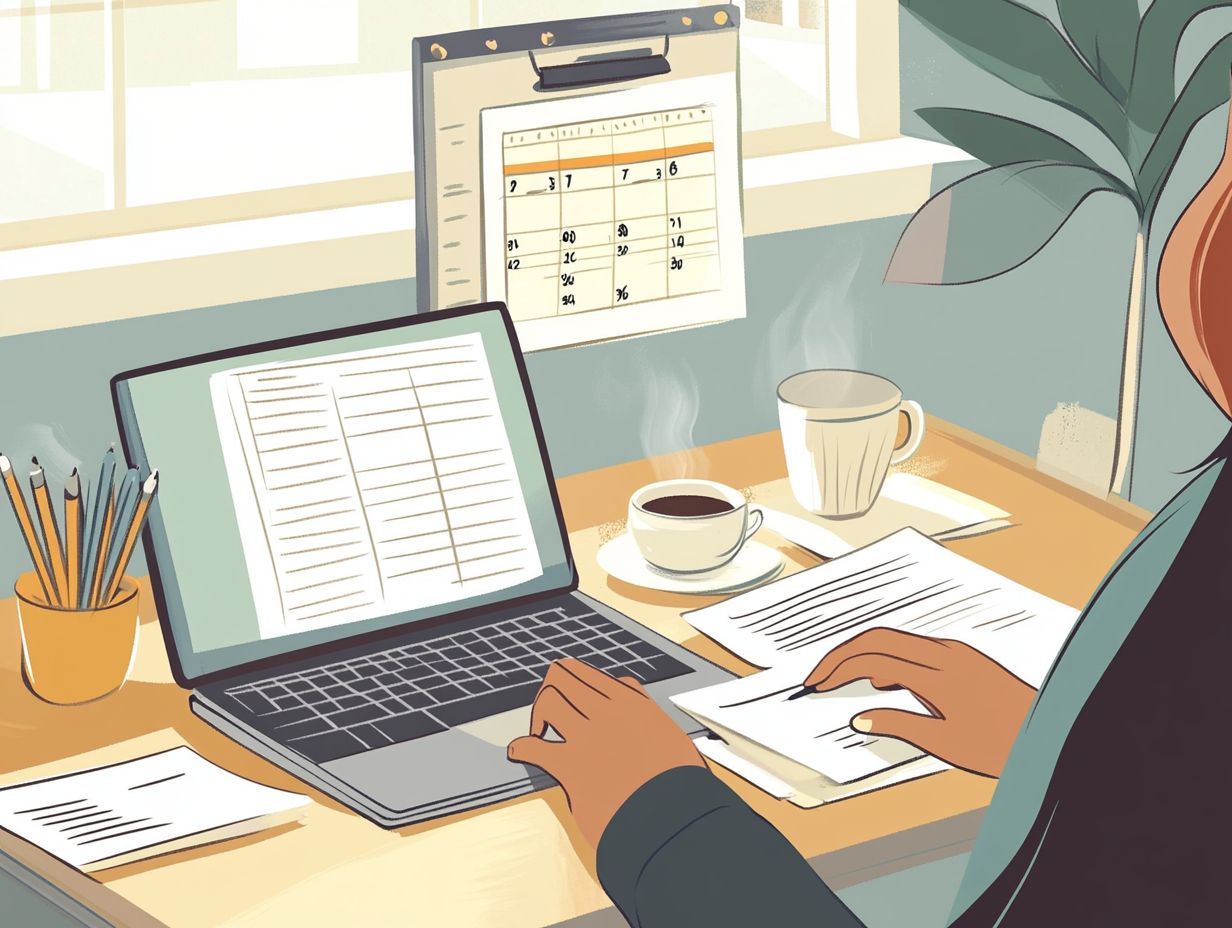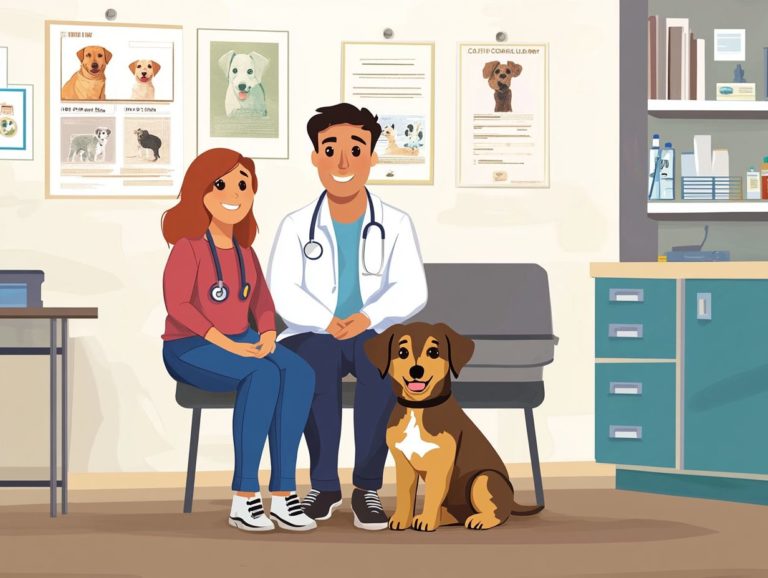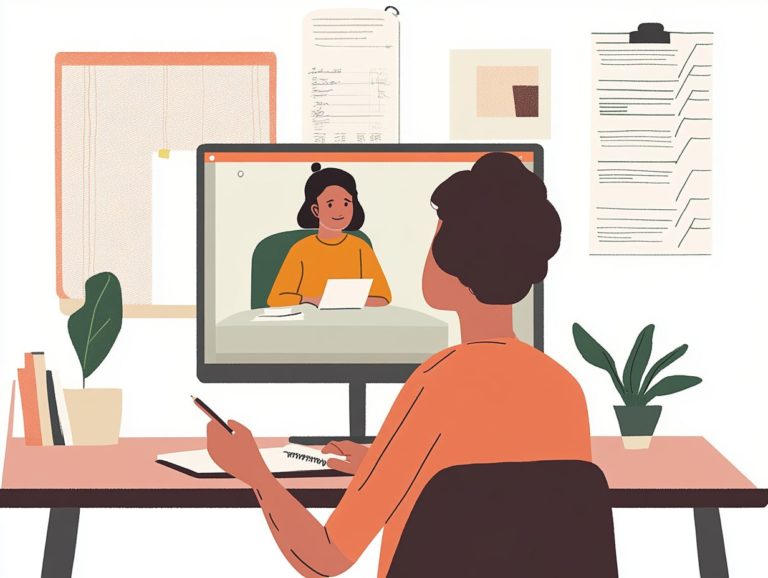How to Document Progress After Consultations
In the fast-paced world of consultations, documenting progress is more than just a formality it s essential for effective follow-up and continuous improvement.
This article explores the importance of tracking progress, key information to document, and various methods for capturing this data.
You ll find practical tips for effective documentation and learn how to use this information in future consultations.
Discover how carefully kept notes can enhance your practice and support ongoing growth.
Contents
- Key Takeaways:
- Why Document Progress After Consultations?
- What to Document
- Methods for Documenting Progress
- Different Approaches and Tools
- Tips for Effective Documentation
- Best Practices for Keeping Track
- Utilizing Progress Documentation for Future Consultations
- How to Use Documentation for Continued Improvement
- Frequently Asked Questions
- What is the importance of documenting progress after consultations?
- What should be included in the documentation of progress after consultations?
- How often should progress be documented after consultations?
- Is there a specific format for documenting progress after consultations?
- Who should be responsible for documenting progress after consultations?
- Can progress be documented electronically?
Key Takeaways:

- Documenting progress after consultations is crucial for tracking and improving client outcomes.
- Include key information such as goals, action plans, and feedback in your progress documentation.
- Effective documentation helps you find the right approach and use best practices, making it beneficial for future consultations.
Why Document Progress After Consultations?
Documenting progress after consultations is a vital part of the therapeutic process. It helps you and your mental health professional maintain awareness of your feelings and track your journey over time.
By keeping notes and using structured documentation methods, you can gain valuable insights into your experiences. This practice boosts your engagement in therapy and enhances the effectiveness of treatment plans and feedback mechanisms, ensuring both your feelings and observations are thoughtfully considered.
Importance of Tracking Progress
Tracking your progress is essential in mental health care. It allows you to reflect on your emotional state and evaluate how well the coping strategies you’ve learned are working.
By systematically recording your thoughts and feelings, you can develop deeper self-awareness. This helps you recognize patterns in your emotional responses and manage stress effectively. Daily journal entries empower you to document your experiences, providing clear evidence of your journey. Performance reviews can serve as structured checkpoints, offering insights into your growth.
These practices encourage accountability and ensure that your goals stay aligned with your evolving needs, leading to improved emotional well-being.
What to Document
When documenting progress in mental health therapy, include important information such as therapy notes, progress notes, and insights into your health journey. These elements are crucial for building a strong treatment plan.
Key Information to Include

Essential information like your feelings and observations is critical for accurate documentation in mental health therapy. Capture your emotions and established treatment goals too!
This balance lets you understand the full range of a client’s experiences, which is vital for creating treatment plans that address both emotional and practical needs. Insights into how someone feels complement the objective observations that provide context, enhancing understanding and encouraging progress.
By combining these aspects, you create a comprehensive view that guides the therapeutic process more effectively. Recognizing the relationship between a client s emotional state and their treatment goals fosters a more supportive journey toward healing.
Methods for Documenting Progress
There are several effective methods for documenting progress in mental health therapy. Consider using electronic notes and specialized therapy software that include structured formats like SOAP (Subjective, Objective, Assessment, Plan) and DAP (Data, Assessment, Plan).
These approaches improve clarity and efficiency in your documentation process!
Different Approaches and Tools
Different approaches and tools for documenting progress in therapy include adopting clear documentation practices and fostering collaboration among healthcare providers. This may involve conducting a mental status exam, which is a brief check of a patient’s thoughts and feelings.
This is crucial because it helps you capture patients’ psychological states accurately. This provides a comprehensive understanding of their progress over time.
By integrating clinical tools such as standardized assessment forms and digital health records, you can make your documentation process more efficient and accessible. These enhancements promote working with different professionals, where insights from various team members can lead to improved treatment strategies.
Ultimately, good documentation helps you track changes during sessions. It also plays a vital role in maintaining continuity of care. Each provider can easily reference the mental status exam findings shared among teams, ensuring that everyone is on the same page.
Tips for Effective Documentation
Implementing good note-taking methods is essential for you as a mental health professional and for your clients. It fosters daily habits of note-taking that embody mindfulness and consistency throughout the therapeutic journey.
This practice boosts clarity and enriches your therapy experience!
Best Practices for Keeping Track

Stick to best practices for quality documentation to reflect client progress accurately. This also facilitates effective goal-setting throughout the therapy process.
When you diligently record the insights, objectives, and outcomes from each session, you re crafting a comprehensive narrative. This narrative not only tracks progress but also shapes future strategies. Using organized forms can streamline this process, ensuring that your documentation remains consistent and clear.
Regularly reviewing these records allows you to make timely adjustments to treatment plans. You can easily identify patterns or areas that require attention.
Engage clients in discussions about their documented progress. This fosters their involvement in goal-setting, turning the therapeutic journey into a more collaborative and transparent experience. This interconnected approach enhances the overall effectiveness of therapy and increases the likelihood of achieving the desired outcomes.
Utilizing Progress Documentation for Future Consultations
Effectively using progress documentation in future consultations can greatly enhance the therapeutic alliance. Not only does it foster a deeper connection, but it also provides valuable insights that inform your ongoing treatment plan and the strategies you choose.
How to Use Documentation for Continued Improvement
Using documentation for ongoing improvement in the therapeutic process gives you crucial insights into client progress. It helps inform effective treatment strategies that elevate outcomes.
By tracking each client’s milestones and challenges through comprehensive records, you can identify areas needing adjustment and celebrate successes that inspire and motivate clients. This reflective practice ensures your evolving methods are responsive to individual needs and firmly grounded in evidence.
Incorporating client feedback into your documentation fosters a two-way dialogue. This deepens understanding and engagement. When progress is clearly visible, clients are more likely to stay committed to their treatment plans, shaping a more personalized approach that enhances both efficacy and satisfaction throughout their therapeutic journey.
Frequently Asked Questions
What is the importance of documenting progress after consultations?

Documenting progress is key! It not only tracks improvements but also sets the stage for future success. This helps identify any changes in the client’s condition and serves as a reference for future consultations.
What should be included in the documentation of progress after consultations?
The documentation should include the date of the consultation, the client’s current status, and any observed changes. It should also outline the discussed goals, progress made, recommendations given, and any follow-up plans.
How often should progress be documented after consultations?
Progress should be documented after every consultation. This creates a continuous record of the client’s journey, aiding in evaluating the effectiveness of consultations and adjusting treatment plans as necessary.
Is there a specific format for documenting progress after consultations?
There is no fixed format for this documentation. However, using a standard form provided by the organization or healthcare facility is recommended. This approach enhances organization and consistency.
Who should be responsible for documenting progress after consultations?
The healthcare provider usually documents the consultation. If a team is involved in the client’s care, all members should contribute to ensure a comprehensive record of progress and treatment goals.
Can progress be documented electronically?
Yes, progress can be documented electronically through electronic health records or digital platforms. This makes accessing and updating information easier and promotes better collaboration among healthcare providers. It’s crucial to ensure that the electronic documentation is secure and compliant with HIPAA, the law that protects patient information.






